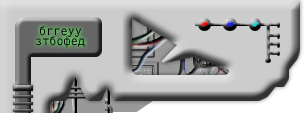Making a table top game is fun and rewarding experience as the person making it has no boundaries on how they make it. You can make as many teams you want, make allies and enemies, super weapons, and an infinite list of other ideas. One problem with making a wargame is trying to make them fair enough so both players will enjoy throwing each others armies at each other. While you can go about many ways on trying to make a game, I have provided a list of steps that could help speed the process and also make it much easier to make it fair.Remember that these steps are only guides, so you can go way out of the boundaries when making games. You do not have to use these exact steps, but I find it easier to make games this way.
Step one
You should come up with a general idea on what your game is all about. Is it set in the future? The past? now? what type of armies would you want to have fighting each other anyway? Another good thing to do is come up with a history of the time they are fighting in, and of each army itself. This keeps the game and the armies in character.
Step two
After you have a general idea on how you want your gaming universe to be like, you should come up with all of the diifferent armies and their characteristics (how would you like them to fight?). Some characteristics could be an army made up mostly of long range ( artillery, bad in hand to hand combat) or the assault type, who would love nothing more than to get their hands around an enemie's neck.
Step three
Choose how you want your game to work (how the turn is made, and how actions are determined) Such an example of how the turn is set up could be:
1.move any or all models of your choice up to the maximum range.
2.shoot an enemy, hide etc.
3.charge into hand to hand, or any other special move you could take.
Finding out how you want shooting/movement/who hits in close etc. normally have to have something to show if the action was actually effective or not. The best example for this is a standard, 6 sided dice. an example rule for targeting and hitting a target could be: 1-3=miss, 4-6=hit.
Another rule you should make now, before any other, is the range of anything that requires it. These things include weapons and movement. You can come up with set rules (infantry= 6" per turn, vehicles= 12" per turn.) or, you can give different movement rates to different models in an army (heavy trooper= 5", light trooper=7" etc.)
Step four
Decide the rules. I will not give examples, because rules are decided only by the one who makes the game. Here is a list of things to consider in any game.(troops= anything in army)
-how do the troops move
-how do they shoot
-where can troops move
-can troops take cover
-is accuracy affected by anything?
-how is close combat worked out?
-do groups have to be in formation?
- how do you hurt another trooper?
-any other set rules, such as leaders, special items (wargear) can you save troops from harm (armor), morale, runnig infantry over with tanks, frightening monsters, magic, the list goes on.
Step five
After you have made the rules, start making the armies. Each squad (or trooper) should have his/her own statistics, which should determine how effective they are on the battlefield. Since statistics are determined on how the maker made the rules, I cannot give a list to help represent an example army.
Step six
Play test your game with friends/ family to see if it works, and to see if it is a fair game or not. One way to make a game fair, is to give each model, or tank, or squad a certain points value. The better the model, the more points it should cost, such as: a fully armoured, elite warrior, with a super gun, or weapon would obviously cost more than a simple citizen (as in points).
Step seven
After you have playtested the game, you should reform and redo any rough parts in the rules. Even after you have reformed the game, you should still try and change the rules to the point where the games are relatively short, fun, fair, and exciting.

